In early May 2019, the Fairfax Alliance for Better Bicycling (FABB) reached out to each candidate running for a seat on the Fairfax County Board of Supervisors (BOS) with a survey about transportation, access, safety, and related policies in the region. The responses below were received by the deadline provided to each campaign and are unedited. We encourage supporters of the FABB mission to carefully consider each candidates’ position and to vote in the June 11th primaries.
FABB will update this post with additional survey responses if we receive any from the remaining candidates.
Responses are organized by Chair candidates first, then alphabetically by district and last name.
Chairman – Alicia Plerhoples
Braddock – no replies from candidates
Dranesville – no replies from candidates
Hunter Mill – Walter Alcorn; Maggie Parker
Lee – Rodney Lusk; James Migliaccio
Mason – Gary N. Aiken; Penny Gross
Mount Vernon – no replies from candidates
Providence – Phil Niedzielski-Eichner; Dalia Palchik; Edythe Kelleher; Erika Milena Yalowitz
Springfield – Linda Sperling
Sully – no replies from candidates
Alicia Plerhoples – (D) Candidate for Chairman, BOS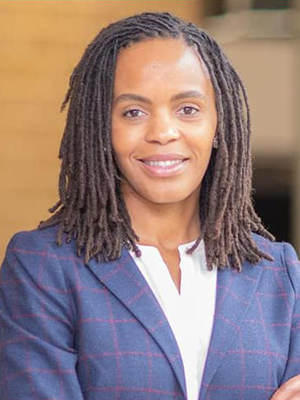
Q: Tell us about your bicycling experience.
I bike for leisure and exercise with my family, mostly in my neighborhood and along the W&OD trail; I also enjoy mountain biking with my husband who is an avid mountain biker, mainly at Lake Fairfax and Fountainhead Parks.
Q: Would you join FABB for an organized bike ride through your district?
Yes. I’d be more than happy to take part.
Q: Biking, walking, and other active transportation options offer a healthy, earth-friendly alternative to driving. Fairfax County has made significant strides towards improving bicycling in recent years but so much still needs to be done. What do you see as the biggest impediment to safe and accessible bicycling in Fairfax County and how would you work to fix that?
Fairfax County has many dedicated avenues for biking throughout the county but needs more. As Chairman, I would focus on solving the “first-mile/last mile” problem (of getting people from their homes to public transit or work) by working on connecting neighborhoods and local communities to major biking byways. More bike lanes are needed, and we also need to make all drivers more aware of bicyclists and pedestrians through education and through design. Mixed use and walkable developments are critical in establishing a culture to move away from automobile dependence. Any mixed use developments that are pedestrian-friendly also need to be bicycle-friendly.
Q: In 2018, Fairfax County had 16 pedestrian/motor vehicle-related fatalities and 196 injuries. This year, eight pedestrians have been struck and killed on our streets in the first 4 months. What would you do to make our communities safer for vulnerable road users? Would you support Fairfax County pursuing a Vision Zero policy similar to neighboring jurisdictions?
Every Fairfax County resident deserves the opportunity to live somewhere affordable, convenient, and safe. As Chairman, I will support initiatives, like Vision Zero, to ensure our pedestrians, bicyclists, and drivers have safe routes to travel within Fairfax County. All high-speed and high-volume roads must have a plan for safe passage of both bicyclists and pedestrians.
Q: Fairfax County’s Health in All policies seeks to improve public health by integrating health considerations in policy decisions across sectors. How would you promote bicycling as part of this initiative?
Bicycling is not only a great way to encourage cardiac health, but is also a great social activity that improves mental health and the overall well-being of our residents. As Chairman, I would be committed to promoting bicycle lanes on transportation projects, work with partners to increase access to bikeshare programs, install bike lockers for bicyclists along frequently used routes, and initiating a public education campaign on the benefits of bicycling.
Q: One Fairfax commits the county and schools to intentionally consider equity when making policies or delivering programs and services. How do you see this applying to bicycling safety and access?
Implementing equity requires a multi-pronged approach and the political courage to intentionally and systematically break down barriers that create such gaps in opportunity. I was Chair of Diversity at Georgetown Law where I collaborated closely with our Chief Equity Officer at Georgetown Law to ensure we viewed each issue through a lens of equity (I am a tenured law professor at Georgetown). I will bring that same experience as Chair of the Board of Supervisors.
As Chairman, I would apply One Fairfax to ensure that low-income communities have access to safe and low-cost bicycling options. This includes building bike lanes not only in biking-dense areas but also in parts of the county lacking bike lanes. I plan to work with partners to bring low-cost bikeshare programs to underserved communities and make all of our streets safer for bicyclists.
Q: The Fairfax Countywide Trails and Bicycle Master plans provide a clear path to improve bicycling infrastructure, but funding for a proposed 5-year update in 2019 has not been allocated. Will you support funding to update these plans?
Yes.
Q: In its first year of operations in Fairfax County, Capital Bikeshare users traveled 27,150 miles. Do you support the expansion of Capital Bikeshare and what locations would you suggest? How would you ensure that bikeshare is equitably accessible to all County residents, particularly lower-income communities?
I whole-heartedly support expansion of Capital Bikeshare in Fairfax County around Metro stations, commuter routes, commercial hubs, and in densely populated communities. In addition to the planned locations in Vienna, Tysons, Reston, and Providence, I support the current recommendations to add bikeshare from the Dunn Loring and Vienna Metro, along Gallows Road, Nottoway Park and Circle Towers. I will work with partners in the community to determine where there is the most need for new locations in underserved areas like Bailey’s Crossroads and Hybla Valley, and promote and subsidize bikeshare for low-income residents.
Q: How would you balance funding for road expansion with transit, bicycle, and pedestrian improvements?
Public Transit: Highest Priority
Personal Auto: Medium Priority
Bike: High Priority
Walk: High Priority
Other (please specify): Autonomous vehicles
——————————————————————
Walter Alcorn – (D) Candidate for Hunter Mill District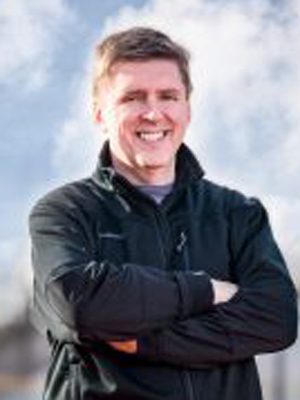
Q: Tell us about your bicycling experience.
Intermittent cyclist, mostly on local trails and W&OD. Long-term indoor cycling class participant at Reston YMCA.
Q: Would you join FABB for an organized bike ride through your district?
Yes! In 2008 or 2009 I participated in a similar ride with FABB leadership in and around Tysons when I chaired the Planning Commission’s Tysons Committee. This ride provided very valuable insights into both short- and long-term needs that informed the 2010 Tysons comprehensive plan amendment.
Q: Biking, walking, and other active transportation options offer a healthy, earth-friendly alternative to driving. Fairfax County has made significant strides towards improving bicycling in recent years but so much still needs to be done. What do you see as the biggest impediment to safe and accessible bicycling in Fairfax County and how would you work to fix that?
Creating and maintaining safe routes for bicycling is the biggest challenge. If elected Hunter Mill Supervisor I would accelerate existing plans to enable non-motorized access to transit stations and work centers by increasing funding and will lend my assistance to overcome problems that inevitably arise.
Q: In 2018, Fairfax County had 16 pedestrian/motor vehicle-related fatalities and 196 injuries. This year, eight pedestrians have been struck and killed on our streets in the first 4 months. What would you do to make our communities safer for vulnerable road users? Would you support Fairfax County pursuing a Vision Zero policy similar to neighboring jurisdictions?
I support Fairfax County adoption of a Vision Zero policy and allocating additional funding to reverse this trend.
Q: Fairfax County’s Health in All policies seeks to improve public health by integrating health considerations in policy decisions across sectors. How would you promote bicycling as part of this initiative?
I support more community-specific and general consumer education about the benefits of bicycling, including an earned media strategy highlighting health benefits as part of a broader strategy to get more residents out of single occupancy vehicles.
Q: One Fairfax commits the county and schools to intentionally consider equity when making policies or delivering programs and services. How do you see this applying to bicycling safety and access?
We need to make sure that access is available to residents in all neighborhoods and not just serving communities that are the loudest. This means finding creative ways to maintain old unusable trails and close missing trail connections, and addressing unsafe locations where vehicle/bicycle conflicts can (or have) resulted in accidents.
Q: The Fairfax Countywide Trails and Bicycle Master plans provide a clear path to improve bicycling infrastructure, but funding for a proposed 5-year update in 2019 has not been allocated. Will you support funding to update these plans?
Yes. With the silver line now a reality, new commuter patterns, and the One Fairfax policy all point to the need for a plan update.
Q: In its first year of operations in Fairfax County, Capital Bikeshare users traveled 27,150 miles. Do you support the expansion of Capital Bikeshare and what locations would you suggest? How would you ensure that bikeshare is equitably accessible to all County residents, particularly lower-income communities?
I would like to review this program before committing to any change given the rapidly changing markets for not only bicycles but also scooters, mopeds, etc.
Q: How would you balance funding for road expansion with transit, bicycle, and pedestrian improvements?
Public Transit: Highest Priority
Personal Auto: Highest Priority
Bike: Highest Priority
Walk: Highest Priority
——————————————————————
Maggie Parker – (D) Candidate for Hunter Mill District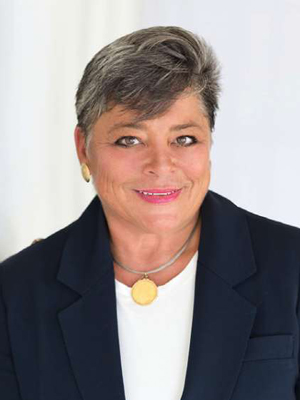
Q: Tell us about your bicycling experience.
I rode a lot as a child; it was my primary transportation to my summer volunteer job from ages 13 – 16. My biking now is indoor spinning.
Q: Would you join FABB for an organized bike ride through your district?
I love FABB, have worked closely with some of your members and am a bicycle advocate. I have had three joints replaced and have become a ‘nervous Nellie’ – I’m not confident on the road, primarily when having to stop and start.
Q: Biking, walking, and other active transportation options offer a healthy, earth-friendly alternative to driving. Fairfax County has made significant strides towards improving bicycling in recent years but so much still needs to be done. What do you see as the biggest impediment to safe and accessible bicycling in Fairfax County and how would you work to fix that?
I am hopeful that our most significant impediment is time. Fairfax County has many areas that are in redevelopment, and that takes time. This is good in that the approvals pay much more attention to safe bicycle paths and improved connectivity. It can create traffic issues with impatient drivers and missing or interrupted connections for pedestrians and cyclists. I would work to fix that by continuing to press the development community to think “outside the box” for ways to connect properties and amenities with better bicycle and pedestrian infrastructure. This includes my current project to construct a bridge over Sunset Hills Road at Wiehle Avenue, Reston.
I am proud to have worked on delivery of a secure bicycle storage facility at Wiehle – the first in the County. As a Metro advocate and developer of transit oriented communities I’ve had the privilege of fighting for true, safe multimodal transit solutions. Comstock was an early adopter and has been influential in moving these concepts forward with other developers and their projects.
Q: In 2018, Fairfax County had 16 pedestrian/motor vehicle-related fatalities and 196 injuries. This year, eight pedestrians have been struck and killed on our streets in the first 4 months. What would you do to make our communities safer for vulnerable road users? Would you support Fairfax County pursuing a Vision Zero policy similar to neighboring jurisdictions?
As has been my practice, I would seek collaborative solutions, gathering voices such as advocates, police officers and traffic/transportation staff. Public outreach and education is a key component of the solution, especially in and for communities and populations where English is a second language. Vision Zero is a good concept but I think it needs to be tailored to the needs of Fairfax County, a jurisdiction with 400 square miles and road standards only beginning to morph from suburban standards to urban.
Q: Fairfax County’s Health in All policies seeks to improve public health by integrating health considerations in policy decisions across sectors. How would you promote bicycling as part of this initiative?
I would love to work with healthcare providers in our County to help incorporate biking into daily health habit profiles. A program in Boston allowed doctors to ‘prescribe’ bikeshare passes for lower-income patients. An exciting idea; let’s connect and talk to see if it would be effective in Fairfax County.
Q: One Fairfax commits the county and schools to intentionally consider equity when making policies or delivering programs and services. How do you see this applying to bicycling safety and access?
Bicycling is a great equalizer. Owning or having access to a bike is a rite of passage for the privileged, providing independence and requiring a sense of responsibility. I would work with our school board to see how we can promote biking to and from school more regularly than twice a year, how we can teach maintenance and how we can refurbish and redistribute bicycles throughout our schools. Foremost, we need to provide adequate access from neighborhoods to schools.
Q: The Fairfax Countywide Trails and Bicycle Master plans provide a clear path to improve bicycling infrastructure, but funding for a proposed 5-year update in 2019 has not been allocated. Will you support funding to update these plans?
Yes. This is a KEY piece of our overall transportation plan; safe connectivity is essential to improved transit.
Q: In its first year of operations in Fairfax County, Capital Bikeshare users traveled 27,150 miles. Do you support the expansion of Capital Bikeshare and what locations would you suggest? How would you ensure that bikeshare is equitably accessible to all County residents, particularly lower-income communities?
I am a huge supporter of CABI and worked hard with the County to bring it to Reston. It does need to expand but to the right places. Let’s look at schools in addition to job centers, and continue to expand our bus network in tandem with CABI.
Q: How would you balance funding for road expansion with transit, bicycle, and pedestrian improvements?
Public Transit: Highest Priority
Personal Auto: Least Priority
Bike: High Priority
Walk: Medium Priority
Other (please specify): All are of critical import; I view public transit as number one because it moves more people at one time and takes more cars off the road ultimately reducing the vehicular conflict.
——————————————————————
Rodney Lusk – (D) Candidate for Lee District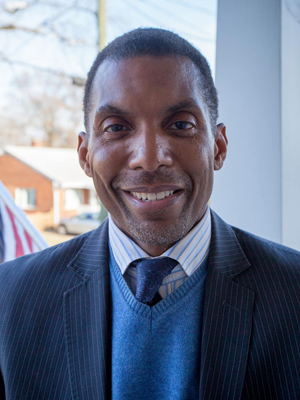
Q: Tell us about your bicycling experience.
As a child growing up in this community I regularly rode my bike along the George Washington Memorial Parkway, and then while in college I used my bicycle as my primary mode of transposition for two years. These days, I ride mostly for pleasure between the Mount Vernon and Alexandria areas.
Q: Would you join FABB for an organized bike ride through your district?
Of course.
Q: Biking, walking, and other active transportation options offer a healthy, earth-friendly alternative to driving. Fairfax County has made significant strides towards improving bicycling in recent years but so much still needs to be done. What do you see as the biggest impediment to safe and accessible bicycling in Fairfax County and how would you work to fix that?
In my view, our most pressing current shortfall is our lack of continuous bike lanes through most areas of Lee District. This means that we have great localized options in certain areas, but it remains difficult to traverse the entire district continuously on bike. In order to remedy this problem, I would suggest that we enhance the stripping and connectivity of existing lanes in order to build a more connected and accessible network for bike traffic in the district. This entire plan must be supplemented by a thoughtful and well planned approach to bike safety, making sure that the paths are constantly maintained and kept visible.
Q: In 2018, Fairfax County had 16 pedestrian/motor vehicle-related fatalities and 196 injuries. This year, eight pedestrians have been struck and killed on our streets in the first 4 months. What would you do to make our communities safer for vulnerable road users? Would you support Fairfax County pursuing a Vision Zero policy similar to neighboring jurisdictions?
The Historic Richmond Highways Corridor remains the most dangerous stretch of road in Commonwealth. This is due to a variety of factors, including non-motor vehicle commuters both with the right of way and not. Our single best chance to have an impact on this ongoing issue will be in conjunction with the upcoming Embark Richmond Highway Plan implementation. As Supervisor, I would work with VDOT, FCDOT, and the rest of the Board to implement pedestrian and bike friendly options along the Corridor, as well as increase their frequency and visibility. I would support this approach as part of a broader effort to implement a County wide Vision Zero Policy.
Q: Fairfax County’s Health in All policies seeks to improve public health by integrating health considerations in policy decisions across sectors. How would you promote bicycling as part of this initiative?
Obviously those that regularly ride bikes enjoy the associated health benefits, but beyond that, each bike that is on the road is one less car that is generating emissions and impacting our environment. With that in mind, I would work with local employers to encourage the use of bikes to both reduce traffic congestion and emissions, and increase positive health outcomes across our work force.
Q: One Fairfax commits the county and schools to intentionally consider equity when making policies or delivering programs and services. How do you see this applying to bicycling safety and access?
Access to transportation can be a socioeconomic equalizer. By increasing the options that are available to our students, workers and other residents, we are making it possible for them to access opportunities that may have otherwise proved challenging. Bike lanes have a role to play in this equity, as it is one of the most efficient, and economically viable modes of transportation.
Q: The Fairfax Countywide Trails and Bicycle Master plans provide a clear path to improve bicycling infrastructure, but funding for a proposed 5-year update in 2019 has not been allocated. Will you support funding to update these plans?
I am apprehensive about committing to funding decisions before a chance to study the plan within the Board structure. I am committed to exploring the issue, and working with FABB to support our bike lanes and trails to the greatest degree possible.
Q: In its first year of operations in Fairfax County, Capital Bikeshare users traveled 27,150 miles. Do you support the expansion of Capital Bikeshare and what locations would you suggest? How would you ensure that bikeshare is equitably accessible to all County residents, particularly lower-income communities?
I’ll start by saying that I 100% support the expansion of Capital Bike share, and have actually helped in the placement of a bike share station in Tysons. Currently, most bike share stations are located within 1/2 mile of a metro station. To remedy this in Lee District, I will support the expansion of bike share kiosks along bus rapid transit hubs, particularity in low income areas where they can have a pronounced impact.
Q: How would you balance funding for road expansion with transit, bicycle, and pedestrian improvements?
Public Transit: Highest Priority
Personal Auto: Least Priority
Bike: Medium Priority
Walk: High Priority
——————————————————————
James Migliaccio – (D) Candidate for Lee District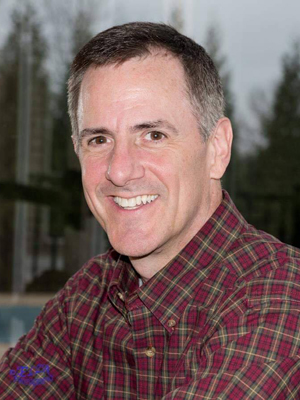
Q: Tell us about your bicycling experience.
I am a recreational cyclist. I rode bicycles as a child through college and then took a break until about seven years ago.
Q: Would you join FABB for an organized bike ride through your district?
Yes. It would be a great opportunity to showcase Lee District and to determine where we could better place or improve our bike paths.
Q: Biking, walking, and other active transportation options offer a healthy, earth-friendly alternative to driving. Fairfax County has made significant strides towards improving bicycling in recent years but so much still needs to be done. What do you see as the biggest impediment to safe and accessible bicycling in Fairfax County and how would you work to fix that?
The willingness of automobile users to accommodate other forms of transit on the roadways. I would encourage implementation of the Master Bike Plan, developers to not seek waivers of trail requirements and to seek the use of road diets to provide bike lanes where appropriate. Additionally, I would seek to include impacted stakeholders when each cycle of repaving occurs in Lee District to determine if there is a chance to add bike lanes.
Q: In 2018, Fairfax County had 16 pedestrian/motor vehicle-related fatalities and 196 injuries. This year, eight pedestrians have been struck and killed on our streets in the first 4 months. What would you do to make our communities safer for vulnerable road users? Would you support Fairfax County pursuing a Vision Zero policy similar to neighboring jurisdictions?
As supervisor, I would support the Board’s endorsement of Vision Zero and encourage VDOT to build upon its Arrive Alive Virginia plan and work with Fairfax to achieve its goals. I would seek to update the 2014 Countywide Master Bicycle Plan, continue spot improvements to help protect pedestrians, provide traffic preemption devices for emergency vehicles and continue implementation of road and lane diets where appropriate.
Q: Fairfax County’s Health in All policies seeks to improve public health by integrating health considerations in policy decisions across sectors. How would you promote bicycling as part of this initiative?
I would encourage all agencies to consider bicycling as part of any program that promotes exercise. This could be as simple as adding more bike racks to buses and on government land or to encourage bike to school programs. As supervisor, I would also seek the implementation of the Fairfax County Master Bike Plan to promote bicycling and the in 2020 secure funding to update the plan.
Q: One Fairfax commits the county and schools to intentionally consider equity when making policies or delivering programs and services. How do you see this applying to bicycling safety and access?
I envision the One Fairfax policy allowing us to focus on delivering access to bicycling throughout Lee District, especially in areas along Richmond Highway and in downtown Springfield.
Q: The Fairfax Countywide Trails and Bicycle Master plans provide a clear path to improve bicycling infrastructure, but funding for a proposed 5-year update in 2019 has not been allocated. Will you support funding to update these plans?
Yes.
Q: In its first year of operations in Fairfax County, Capital Bikeshare users traveled 27,150 miles. Do you support the expansion of Capital Bikeshare and what locations would you suggest? How would you ensure that bikeshare is equitably accessible to all County residents, particularly lower-income communities?
I support the expansion of the Capital Bikeshare program to include locations in Lee District. Within Lee District, there are opportunities in Kingstowne, near the Huntington and Franconia-Springfield Metro stops and along Richmond Highway. I would look at locations across the County and specifically in Lee District, through the lens of One Fairfax and seek placement of locations accordingly.
Q: How would you balance funding for road expansion with transit, bicycle, and pedestrian improvements?
Public Transit: High Priority
Personal Auto: High Priority
Bike: High Priority
Walk: High Priority
——————————————————————
Gary N. Aiken – (R) Candidate for Mason District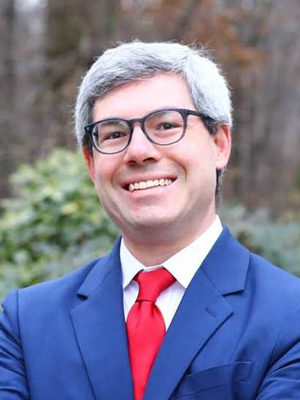
Q: Tell us about your bicycling experience.
I bicycle for exercise. I do not commute using a bicycle.
Q: Would you join FABB for an organized bike ride through your district?
Yes.
Q: Biking, walking, and other active transportation options offer a healthy, earth-friendly alternative to driving. Fairfax County has made significant strides towards improving bicycling in recent years but so much still needs to be done. What do you see as the biggest impediment to safe and accessible bicycling in Fairfax County and how would you work to fix that?
Commuting patterns are generally not conducive to bicycling in Mason. Our office vacancy rates are extremely high, if we had a better business climate, we might attract bicycle commuters, since our district is the most compact by area. Also, if we are serious, we need to connect Mason by bicycle to National Landing (Amazon) and the Pentagon for our high concentration of military.
Q: In 2018, Fairfax County had 16 pedestrian/motor vehicle-related fatalities and 196 injuries. This year, eight pedestrians have been struck and killed on our streets in the first 4 months. What would you do to make our communities safer for vulnerable road users? Would you support Fairfax County pursuing a Vision Zero policy similar to neighboring jurisdictions?
I would do more with innovative road striping to alert drivers. Also, enforcing zoning and street parking would enhance visibility for drivers, walkers and bikers.
Q: Fairfax County’s Health in All policies seeks to improve public health by integrating health considerations in policy decisions across sectors. How would you promote bicycling as part of this initiative?
I’m not familiar with this program.
Q: One Fairfax commits the county and schools to intentionally consider equity when making policies or delivering programs and services. How do you see this applying to bicycling safety and access?
I am not a One Fairfax proponent. I am in favor of making smart decisions for the citizens of this county. Let’s make arguments for and against on the merits, not to comply with some ambiguous word salad like One Fairfax.
Q: The Fairfax Countywide Trails and Bicycle Master plans provide a clear path to improve bicycling infrastructure, but funding for a proposed 5-year update in 2019 has not been allocated. Will you support funding to update these plans?
I am not making any pledges to any group during this campaign.
Q: In its first year of operations in Fairfax County, Capital Bikeshare users traveled 27,150 miles. Do you support the expansion of Capital Bikeshare and what locations would you suggest? How would you ensure that bikeshare is equitably accessible to all County residents, particularly lower-income communities?
I’m not sure about the “equitable” part, but introducing bike share in Mason District would certainly have many locations that would benefit lower income and immigrant communities. Skyline, Bailey’s, and Lincolnia come to mind.
Q: How would you balance funding for road expansion with transit, bicycle, and pedestrian improvements?
Public Transit: High Priority
Personal Auto: High Priority
Bike: Medium Priority
Walk: High Priority
——————————————————————
Penny Gross – (D) Candidate for Mason District
Q: Tell us about your bicycling experience.
Other than having a bike as a child, my biking experience is limited to a stationary bike for exercise.
Q: Would you join FABB for an organized bike ride through your district?
I would support such a rider but cannot participate by riding myself.
Q: Biking, walking, and other active transportation options offer a healthy, earth-friendly alternative to driving. Fairfax County has made significant strides towards improving bicycling in recent years but so much still needs to be done. What do you see as the biggest impediment to safe and accessible bicycling in Fairfax County and how would you work to fix that?
More bike lanes and multipurpose pathways are needed. VDOT is more amenable to bike lanes on their roadways, but more driver education is needed to understand the rules of the road and that bike lanes are not simply another way to pass vehicles on the right!
Q: In 2018, Fairfax County had 16 pedestrian/motor vehicle-related fatalities and 196 injuries. This year, eight pedestrians have been struck and killed on our streets in the first 4 months. What would you do to make our communities safer for vulnerable road users? Would you support Fairfax County pursuing a Vision Zero policy similar to neighboring jurisdictions?
More lighting, safer crosswalks, pedestrian signals at signalized intersections, and more education of both pedestrians and drivers. Also, pedestrians should wear something white or reflective at night so that they can be seen. Dark clothing and crossing not the the crosswalk are significant in most vehicle/pedestrian crashes. Fairfax County should explore a Vision Zero policy.
Q: Fairfax County’s Health in All policies seeks to improve public health by integrating health considerations in policy decisions across sectors. How would you promote bicycling as part of this initiative?
Additional bike racks and bike amenities at our workplaces, more bike lanes, and again, more education of drivers, pedestrians, and cyclists about the rules of the road.
Q: One Fairfax commits the county and schools to intentionally consider equity when making policies or delivering programs and services. How do you see this applying to bicycling safety and access?
See response to question [above]. Bike road-e-os for youth are popular and successful. Should do more of them, in all schools and community centers, perhaps with bike helmet rewards.
Q: The Fairfax Countywide Trails and Bicycle Master plans provide a clear path to improve bicycling infrastructure, but funding for a proposed 5-year update in 2019 has not been allocated. Will you support funding to update these plans?
Yes, as we plan for two year budget cycles, the County Executive should be directed to prepare a funding plan for the next FIscal Year. Also, one-time funding from carryover or third quarter should be considered for this item.
Q: In its first year of operations in Fairfax County, Capital Bikeshare users traveled 27,150 miles. Do you support the expansion of Capital Bikeshare and what locations would you suggest? How would you ensure that bikeshare is equitably accessible to all County residents, particularly lower-income communities?
Capital Bikeshare could be expanded to activity centers, and the Seven Corners area might be a good location. Also, the Skyline area is eliciting a lot of interest right now, and Bikeshare could be considered as that area re-tenants and redevelops.
Q: How would you balance funding for road expansion with transit, bicycle, and pedestrian improvements?
Public Transit: High Priority
Personal Auto: Medium Priority
Bike: High Priority
Walk: High Priority
Other (please specify): Since funding for road expansion primarily is a responsibility of the Commonwealth of Virginia, the General Assembly has a significant role to play, more so than the Board of Supervisors.
——————————————————————
Phil Niedzielski-Eichner – (D) Candidate for Providence District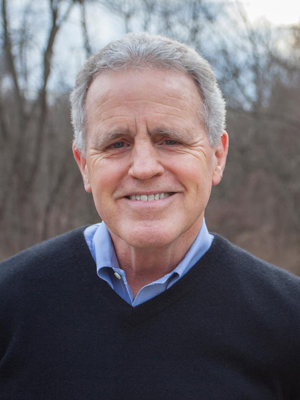
Q: Tell us about your bicycling experience.
I grew up riding my bike everywhere in Columbus and Cleveland, Ohio and surroundings. I interned for a summer in Washington, lived in a dorm at Catholic U. and got around the City and surroundings on my bike. My longest sustained ride was only 40 miles. I had my bike stolen twice. I taught both my daughters to ride, having to use physics and vectors to convince one of them that she won’t tip over as long as she is in motion. I do not currently ride. A speeding bike and I collided while I was walking on the W&OD trail between Hunter Mill Road and Vienna — rider and walker both survived but nursed bruises.
Q: Would you join FABB for an organized bike ride through your district?
Sure.
Q: Biking, walking, and other active transportation options offer a healthy, earth-friendly alternative to driving. Fairfax County has made significant strides towards improving bicycling in recent years but so much still needs to be done. What do you see as the biggest impediment to safe and accessible bicycling in Fairfax County and how would you work to fix that?
Constraints are many: (a) Fairfax has grown as a car-centric suburban community: (b) VDOT is responsible for the vast majority of Fairfax’s road network, which means resource competition with other parts of state and limited local authority; (c) Inadequate right-of-way was set aside when modern roads were constructed; (d) in many cases key collector roads are built over/align with old farming roads; (e) infrastructure most often follows demand; but demand won’t grow until infrastructure is in place for safe walking and biking. Solutions must generally track as mitigations to reduce these as barriers to increased walking and biking. Most significantly, bikeways and walkways must become a higher County priority in master planning and resource allocation.
Q: In 2018, Fairfax County had 16 pedestrian/motor vehicle-related fatalities and 196 injuries. This year, eight pedestrians have been struck and killed on our streets in the first 4 months. What would you do to make our communities safer for vulnerable road users? Would you support Fairfax County pursuing a Vision Zero policy similar to neighboring jurisdictions?
Yes, I would support designing a Fairfax Vision Zero policy upon the recommendation of the County’s Trails, Sidewalks and Bikeways Committee and will propose to my Supervisor colleagues assigning this task to the Committee.
Q: Fairfax County’s Health in All policies seeks to improve public health by integrating health considerations in policy decisions across sectors. How would you promote bicycling as part of this initiative?
I believe a concerted focus on biking and walking must be part of traffic demand management strategies expected of new developments, particularly in our urban centers; as well as a key element of the County’s wellness and good health strategies.
Q: One Fairfax commits the county and schools to intentionally consider equity when making policies or delivering programs and services. How do you see this applying to bicycling safety and access?
Equity is the lens through which the Board of Supervisors commits the County to view all policy and program decisions. I support One Fairfax and the associated expectation that the community is broadly invited to weigh in on County priorities and, specifically to safety and good health, investments are equitable across the County.
Q: The Fairfax Countywide Trails and Bicycle Master plans provide a clear path to improve bicycling infrastructure, but funding for a proposed 5-year update in 2019 has not been allocated. Will you support funding to update these plans?
Absolutely and indeed as a Planning Commissioner I called for this investment when consideration was given to changing the bike and trail location through Huntley Meadows.
Q: In its first year of operations in Fairfax County, Capital Bikeshare users traveled 27,150 miles. Do you support the expansion of Capital Bikeshare and what locations would you suggest? How would you ensure that bikeshare is equitably accessible to all County residents, particularly lower-income communities?
Yes I support Capital Bikeshare. I would expect the locations and equitable accessibility to be key elements in the Countywide Trails and Master Plan developed by the Trails, Sidewalks and Bikeways Committee, which I will seek to empower and promote.
Q: How would you balance funding for road expansion with transit, bicycle, and pedestrian improvements?
Public Transit: High Priority
Personal Auto: High Priority
Bike: High Priority
Walk: High Priority
Other (please specify): A priority focus for me will be infrastructure investments that will reduce single occupancy vehicle use. Promoting efficient and effective public transport, combined with facilitating and promoting walking and biking, will be key to accomplishing this reduction.
——————————————————————
Dalia Palchik – (D) Candidate for Providence District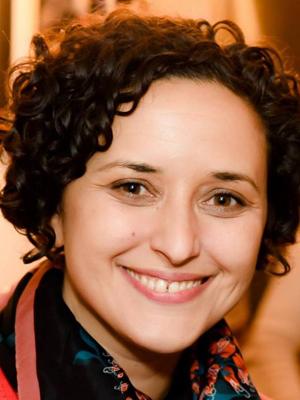
Q: Tell us about your bicycling experience.
Being able to bike has always been a big motivator, especially to travel along the Cross County Trail and W&OD, since I was a child. I pushed myself to learn even when not everyone in my family was able to. My bike was the only vehicle I owned for the years I lived in D.C., and having to buy a car was a major deterrent to moving back to my family’s neighborhood in Fairfax County. That is why I am focused and motivated by making bicycling more accessible and safe for all residents and visitors of Fairfax County.
Q: Would you join FABB for an organized bike ride through your district?
Absolutely! That sounds like a great way to view the community in a whole different light, and hopefully meet some residents along our journey.
Q: Biking, walking, and other active transportation options offer a healthy, earth-friendly alternative to driving. Fairfax County has made significant strides towards improving bicycling in recent years but so much still needs to be done. What do you see as the biggest impediment to safe and accessible bicycling in Fairfax County and how would you work to fix that?
Adding more dedicated bike lanes is one of the best ways we can make bicycling more safe and accessible, and likewise, it’s one of our biggest impediments. I would work with FCDOT and VDOT to identify more areas where dedicated bike lanes are needed, and work out the feasibility when it comes to cost, timeline, etc. Filling in missing links for bike paths and trails is also important, and we still have a long way to go in that area as well.
Q: In 2018, Fairfax County had 16 pedestrian/motor vehicle-related fatalities and 196 injuries. This year, eight pedestrians have been struck and killed on our streets in the first 4 months. What would you do to make our communities safer for vulnerable road users? Would you support Fairfax County pursuing a Vision Zero policy similar to neighboring jurisdictions?
I would support Fairfax County implementing a number of Vision Zero strategies. Vision Zero is in line with One Fairfax, brings the community to the table, and focuses on equity. Some components of Vision Zero may run up against the Dillion Rule, but others, such as community engagement, are very much a local endeavor. I would be in favor of having discussions with our Virginia General Assembly delegation to see how we could make this work.
Q: Fairfax County’s Health in All policies seeks to improve public health by integrating health considerations in policy decisions across sectors. How would you promote bicycling as part of this initiative?
I would encourage and promote Bike to Work Day, and even participate in that myself! As part of Fairfax County’s employee LiveWell Program, I would also work with the LiveWell Team to create an incentive program for employees to bike to work on a regular basis.
Q: One Fairfax commits the county and schools to intentionally consider equity when making policies or delivering programs and services. How do you see this applying to bicycling safety and access?
It is important that everyone in Fairfax county has access to bike route and places to park their bikes. It is also important that we continue to expand our partnership with Capital Bikeshare in many other areas of the County. We need to care about bike safety in every corner of the county, regardless of income area or zip code. That means listening to everyone in communities where people feel that bike safety improvements are needed.
Q: The Fairfax Countywide Trails and Bicycle Master plans provide a clear path to improve bicycling infrastructure, but funding for a proposed 5-year update in 2019 has not been allocated. Will you support funding to update these plans?
Yes. This is very critical part of our transportation network and needs to be fully funded.
Q: In its first year of operations in Fairfax County, Capital Bikeshare users traveled 27,150 miles. Do you support the expansion of Capital Bikeshare and what locations would you suggest? How would you ensure that bikeshare is equitably accessible to all County residents, particularly lower-income communities?
Yes, I absolutely support the expansion of our great partner, Capital Bikeshare. This is a fantastic public private partnership, and I would work closely with the company to help them see the potential and demand in many other parts of Providence District, and not just Tysons and Merrifield. In addition to the stations already located in and slated for Tysons and Merrifield, we could certainly use Capital Bikeshare stations in the West Falls Church area along Arlington Blvd.
Q: How would you balance funding for road expansion with transit, bicycle, and pedestrian improvements?
Public Transit: Highest Priority
Personal Auto: Medium Priority
Bike: Highest Priority
Walk: Highest Priority
——————————————————————
Erika Milena Yalowitz – (D) Candidate for Providence District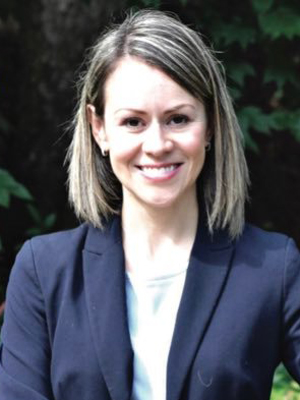
Q: Tell us about your bicycling experience.
I have enjoyed recreational bicyclist since childhood and a commuter bicyclist at different times while a student, a tourist, or while living and working within short distances. I have experienced bicycling in various cities and countries, like Bogota, Frankfurt, London, and Madrid. I believe we have a perfect opportunity as we develop Northern Virginia to add more spaces that invite commuters to drop cars and pick up bikes!
Q: Would you join FABB for an organized bike ride through your district?
Absolutely.
Q: Biking, walking, and other active transportation options offer a healthy, earth-friendly alternative to driving. Fairfax County has made significant strides towards improving bicycling in recent years but so much still needs to be done. What do you see as the biggest impediment to safe and accessible bicycling in Fairfax County and how would you work to fix that?
The biggest impediment to safe and accessible bicycling in our County is that historically, we have given priority to cars and not people. We are conditioned to using cars for transportation and this condition threatens our quality of life on various fronts: precious time spent in traffic; the average Fairfax County commuter spends 90 minutes per day in traffic. This means, 22 full days per person, per year, are not spent with children or family, at a park or on vacation. This time is also affecting productivity.
We need a switch from prioritizing cars to prioritizing people. This is something that bicycling does naturally, as bicycle commutes are mostly engaging with nature and create community. They increase health and wellness rates and are an alternative to combustion pollution.
To accomplish more accessibility, safety and connectivity the County needs work in coordination with the community, with the private and non-profit sectors, with the Virginia Department of Transportation (VDOT) and the U.S. Department of Transportation to prioritize solutions for bicycling that will positively expand our options for commuting. We need safe, comfortable, interesting and connected trails that serve the purpose of connecting people to employment centers, educational centers, commerce and leisure places.
Q: In 2018, Fairfax County had 16 pedestrian/motor vehicle-related fatalities and 196 injuries. This year, eight pedestrians have been struck and killed on our streets in the first 4 months. What would you do to make our communities safer for vulnerable road users? Would you support Fairfax County pursuing a Vision Zero policy similar to neighboring jurisdictions?
I support Vision Zero because I have seen this happen.
Our streets are not safe. Chandra Bhandari died in Tysons while trying to cross the street. Eliseo Ruiz died while on his way to help a friend, a detour from his normal early-morning commute. Subid Singh and Anjil Thapa died while speeding – a mistake that left families heartbroken and devastated. Jose Ramirez died on Telegraph Road. Nelissa Alston died trying to cross Richmond Highway. Tomas Maldonado died on Commerce Street. Pericles Apostolou -my dear friend’s uncle in Falls Church- died trying to cross Arlington Boulevard. Melanie McKenna died driving on Fairfax County Parkway. And that’s just this year. Last year, it was kids like Daniel Serrano, who was crossing the street in Reston just after Christmas when he was killed, leaving behind his mom and a 2-year-old brother. He was the last of the 47 people killed in our county in 2018.
These are our children, our parents, our grandparents, our friends and sisters and colleagues doing nothing except trying to get to wherever they were going. I am outraged and crushed that we find this okay.
I fully intend to push for Fairfax to make a meaningful commitment to Vision Zero, not simply an empty promise. Working with VDOT makes quick fixes difficult, but the safety of our residents and visitors must be paramount. I will work closely with FCDOT to better understand our limits and opportunities for change. As Supervisor, I will press to have roadway engineers work with county police to determine how the road’s design may have contributed to the crash, what changes can be made now, what permanent fixes are needed, and where those design flaws might exist elsewhere in our network. I will also work with FCDOT to ensure the safest possible design speeds of our main roads. VDOT recommends speeds as high as 40mph for urban arterial roads, the design speed for the main roads around Tysons, my home neighborhood. Speeds in places where we want people to walk should be no more than 25 miles per hour, not the 40 miles per hour we have on almost every major road in Providence and Fairfax.
Q: Fairfax County’s Health in All policies seeks to improve public health by integrating health considerations in policy decisions across sectors. How would you promote bicycling as part of this initiative?
Bicycling is arguably the best way to “move around” while keeping our air clean and putting under control our area’s high risk for respiratory diseases. It helps bicyclists stay active, healthy and endorphin-charged which results in organically occurring happiness. One of the many reasons why we should support better bicycling in Fairfax County and the DC region.
Q: One Fairfax commits the county and schools to intentionally consider equity when making policies or delivering programs and services. How do you see this applying to bicycling safety and access?
This is a key part of my proposals. As I have studied approach that many cities have taken to address the problems we face in our area including affordability of housing, transportation and high cost of living, some of the success stories include bicycling subsidies to mitigate costs of transportation.
Subsidies to provide free or reduced bikeshare programs for students and low-income commuters help them better access jobs, enhances independent commuting and it empowers communities; the more bikers we have, the better it is to move around in terms of safety and driver awareness. This can result in better productivity, reduced traffic congestion and definitely, it is a relief on the disposable income that individual users and their families can access in lieu of gas, lease payments, tolls, parking costs, insurance, etc.
Q: The Fairfax Countywide Trails and Bicycle Master plans provide a clear path to improve bicycling infrastructure, but funding for a proposed 5-year update in 2019 has not been allocated. Will you support funding to update these plans?
Absolutely. I believe in widening sidewalks and bike trails, not roads. Our current rating from the League of American Bicyclists is Bronze – not bad – we must do so much more.
So many people in Providence are stuck in their cars, whether they want to be or not, to run even the most modest of errands. If we want to reduce traffic in Fairfax, we have to free people to make choices about how they move. To make driving as safe and convenient as it should be, riding a bike must be equally safe and convenient no matter their age. If someone wants to load up their car with the week’s groceries, good! They should. But they should have a choice about whether it makes sense to get a cargo bike, and they certainly shouldn’t be stuck in traffic behind people who would just as soon be on a trail or bike lane if one were available. I will work closely with VDOT and FCDOT to determine how funds can be reallocated from road widenings and to determine what alternative funding sources are needed to close the gap. A benefit of protected bike lanes is how inexpensive they are per mile, so even a little money can go a long way.
My priorities are set to create more spaces for pedestrians and bikes that we don’t currently have and enhance the systems that enhance mass transit to offer greater good to the greater number of people.
Q: In its first year of operations in Fairfax County, Capital Bikeshare users traveled 27,150 miles. Do you support the expansion of Capital Bikeshare and what locations would you suggest? How would you ensure that bikeshare is equitably accessible to all County residents, particularly lower-income communities?
I believe that we need to connect the urban centers with some of the most populous residential areas to accomplish bike commuting. As I stated above, I want to work on partnerships between government, non-profit, public and private sectors to offer subsidies for students and low-income commuters to ride a bike to school, work or transit stations.
Q: How would you balance funding for road expansion with transit, bicycle, and pedestrian improvements?
——————————————————————
Linda Sperling – (D) Candidate for Springfield District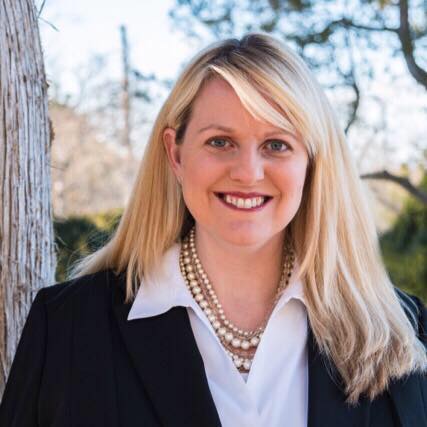
Q: Tell us about your bicycling experience.
I don’t currently own a bike, but used to enjoy riding both road bikes and hybrid bikes in college/grad school and shortly thereafter (as well as when I was younger). The longest ride I have been on is around Burke Lake Park though!
Q: Would you join FABB for an organized bike ride through your district?
Yes, I would need a bike first (and to get in shape!!).
Q: Biking, walking, and other active transportation options offer a healthy, earth-friendly alternative to driving. Fairfax County has made significant strides towards improving bicycling in recent years but so much still needs to be done. What do you see as the biggest impediment to safe and accessible bicycling in Fairfax County and how would you work to fix that?
We have many “bike lanes” that are just lanes painted in roads with no barrier between traffic and bikers…which isn’t the safest alternative. We also have many trails that don’t connect one to another, making it hard for bicyclists to get to their destination without a continuous trail. We need to ensure that we have continuous trails that can get residents from major residential areas to major commercial centers in the county as well as protected bike lanes.
Q: In 2018, Fairfax County had 16 pedestrian/motor vehicle-related fatalities and 196 injuries. This year, eight pedestrians have been struck and killed on our streets in the first 4 months. What would you do to make our communities safer for vulnerable road users? Would you support Fairfax County pursuing a Vision Zero policy similar to neighboring jurisdictions?
As stated above, we need protected bike lanes. Yes, I do support a Vision Zero policy, as we should be doing all that we can to prevent traffic deaths.
Q: Fairfax County’s Health in All policies seeks to improve public health by integrating health considerations in policy decisions across sectors. How would you promote bicycling as part of this initiative?
We need to incorporate trails, protected bike lanes, into our overall transportation infrastructure…we need to look at these as parts of our transportation infrastructure just as we do busses, cars, etc.
Q: One Fairfax commits the county and schools to intentionally consider equity when making policies or delivering programs and services. How do you see this applying to bicycling safety and access?
We need to ensure that we have connected bike trails and protected bike lanes all through the county, not just in the wealthier parts of the county. We need to give consideration to the fact that biking is a much more affordable means of transportation than driving, and as such make it easier for our underserved communities to do so.
Q: The Fairfax Countywide Trails and Bicycle Master plans provide a clear path to improve bicycling infrastructure, but funding for a proposed 5-year update in 2019 has not been allocated. Will you support funding to update these plans?
Yes.
Q: In its first year of operations in Fairfax County, Capital Bikeshare users traveled 27,150 miles. Do you support the expansion of Capital Bikeshare and what locations would you suggest? How would you ensure that bikeshare is equitably accessible to all County residents, particularly lower-income communities?
Yes, I do support the expansion of Capital Bikeshare. I support it in all parts of the county where there are large commercial centers and/or residential centers that are currently underserved by non-private-vehicle means of transportation. As for how to ensure that bikeshare is equitably accessible to all County residents, we need to look at expanding programs–such as free bus passes for students, discounted bus passes for seniors, and discounted taxi vouchers for low-income families–to bikeshare as another form of transportation to be included in these programs. We are modernizing our taxi voucher program by making it available for ridesharing programs (vs only traditional taxis), but also need to look at expanding it to bikes vs just public transit.
Q: How would you balance funding for road expansion with transit, bicycle, and pedestrian improvements?
Public Transit: Highest Priority
Personal Auto: High Priority
Bike: High Priority
Walk: High Priority
——————————————————————
FABB received the following statement from the campaign of Edythe Kelleher:
“While Edythe wholeheartedly supports FABB’s bicycle advocacy, she will not have time at this late stage to complete the survey. She looks forward to working closely with FABB and other cycling enthusiasts in Providence District if elected Supervisor.”
